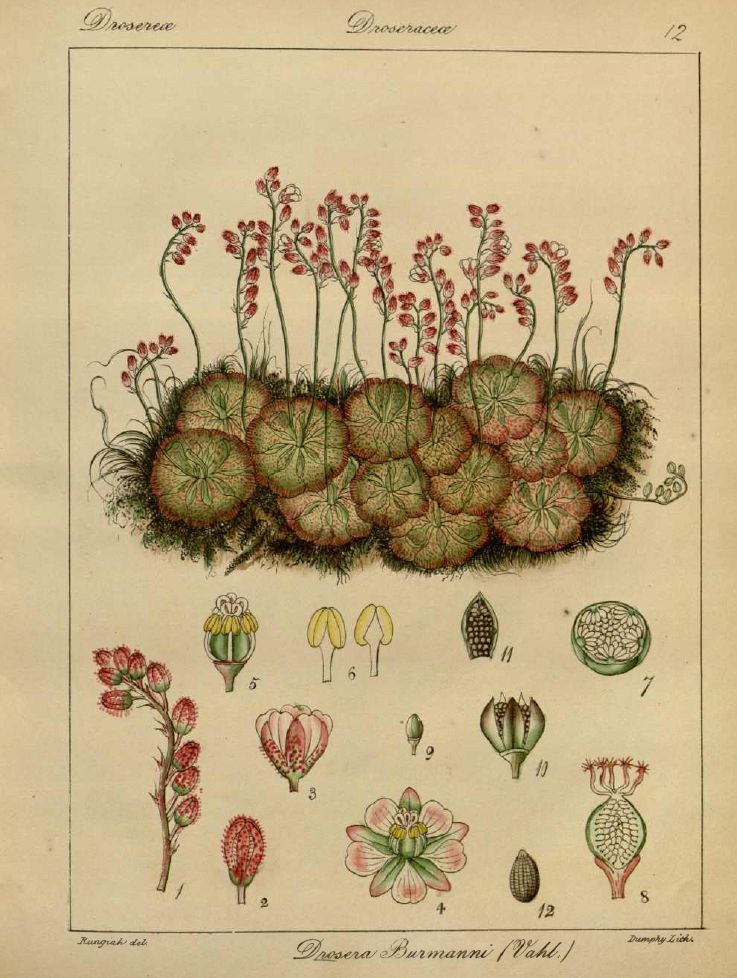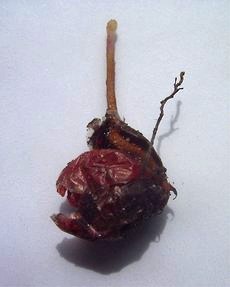|
Robert Wight
Robert Wight MD FRS FLS (6 July 1796 – 26 May 1872) was a Scottish surgeon in the East India Company, whose professional career was spent entirely in southern India, where his greatest achievements were in botany – as an economic botanist and leading taxonomist in south India. He contributed to the introduction of American cotton. As a taxonomist he described 110 new genera and 1267 new species of flowering plants. He employed Indian botanical artists to illustrate many plants collected by himself and Indian collectors he trained. Some of these illustrations were published by William Hooker in Britain, but from 1838 he published a series of illustrated works in Madras including the uncoloured, six-volume ''Icones Plantarum Indiae Orientalis'' (1838–53) and two hand-coloured, two-volume works, the ''Illustrations of Indian Botany'' (1838–50) and ''Spicilegium Neilgherrense'' (1845–51). By the time he retired from India in 1853 he had published 2464 illustrations of ... [...More Info...] [...Related Items...] OR: [Wikipedia] [Google] [Baidu] |
Drosera Burmanni00
''Drosera'', which is commonly known as the sundews, is one of the largest genera of carnivorous plants, with at least 194 species. 2 volumes. These members of the family Droseraceae lure, capture, and digest insects using stalked mucilaginous glands covering their leaf surfaces. The insects are used to supplement the poor mineral nutrition of the soil in which the plants grow. Various species, which vary greatly in size and form, are native to every continent except Antarctica.McPherson, S.R. 2008. ''Glistening Carnivores''. Redfern NaturalHistory Productions Ltd., Poole. Charles Darwin performed much of the early research into ''Drosera'', engaging in a long series of experiments with Drosera rotundifolia which were the first to confirm carnivory in plants. In an 1860 letter, Darwin wrote, “…at the present moment, I care more about ''Drosera'' than the origin of all the species in the world.” Both the botanical name (from the Greek δρόσος: ''drosos'' = "d ... [...More Info...] [...Related Items...] OR: [Wikipedia] [Google] [Baidu] |
William Hooker (botanical Illustrator)
William Hooker (1779–1832) was a British illustrator of natural history. He studied under Franz Bauer (1758–1840), becoming the official artist of the Royal Horticultural Society from 1812 until retirement in 1820, whose publications he illustrated. His paintings of fruit were particularly appreciated. Hooker also worked on the "Oriental Memoirs" of James Forbes and ''The Paradisus Londinensis'' with descriptions by Richard Anthony Salisbury Richard Anthony Salisbury, FRS (born Richard Anthony Markham; 2 May 1761 – 23 March 1829) was a British botanist. While he carried out valuable work in horticultural and botanical sciences, several bitter disputes caused him to be ostracised ... (1761–1829). He contributed illustrations for "Hooker's Finest Fruits" until his death in 1832. See also * Hooker's green, a green pigment, useful for representing leaves. References British botanists 1779 births 1832 deaths Botanical illustrators { ... [...More Info...] [...Related Items...] OR: [Wikipedia] [Google] [Baidu] |
Augustin Pyramus De Candolle
Augustin Pyramus (or Pyrame) de Candolle (, , ; 4 February 17789 September 1841) was a Swiss botanist. René Louiche Desfontaines launched de Candolle's botanical career by recommending him at a herbarium. Within a couple of years de Candolle had established a new genus, and he went on to document hundreds of plant families and create a new natural plant classification system. Although de Candolle's main focus was botany, he also contributed to related fields such as phytogeography, agronomy, paleontology, medical botany, and economic botany. De Candolle originated the idea of "Nature's war", which influenced Charles Darwin and the principle of natural selection. de Candolle recognized that multiple species may develop similar characteristics that did not appear in a common evolutionary ancestor; a phenomenon now known as convergent evolution. During his work with plants, de Candolle noticed that plant leaf movements follow a near-24-hour cycle in constant light, suggestin ... [...More Info...] [...Related Items...] OR: [Wikipedia] [Google] [Baidu] |
Asteraceae
The family Asteraceae, alternatively Compositae, consists of over 32,000 known species of flowering plants in over 1,900 genera within the order Asterales. Commonly referred to as the aster, daisy, composite, or sunflower family, Compositae were first described in the year 1740. The number of species in Asteraceae is rivaled only by the Orchidaceae, and which is the larger family is unclear as the quantity of extant species in each family is unknown. Most species of Asteraceae are annual, biennial, or perennial herbaceous plants, but there are also shrubs, vines, and trees. The family has a widespread distribution, from subpolar to tropical regions in a wide variety of habitats. Most occur in hot desert and cold or hot semi-desert climates, and they are found on every continent but Antarctica. The primary common characteristic is the existence of sometimes hundreds of tiny individual florets which are held together by protective involucres in flower heads, or more t ... [...More Info...] [...Related Items...] OR: [Wikipedia] [Google] [Baidu] |
Christian Gottfried Daniel Nees Von Esenbeck
Christian Gottfried Daniel Nees von Esenbeck (14 February 1776 – 16 March 1858) was a prolific German botanist, physician, zoologist, and natural philosopher. He was a contemporary of Goethe and was born within the lifetime of Linnaeus. He described approximately 7,000 plant species (almost as many as Linnaeus himself). His last official act as president of the German Academy of Natural Scientists Leopoldina was to admit Charles Darwin as a member. He was the author of numerous monographs on botany and zoology. His best-known works deal with fungi. Biography Nees von Esenbeck was born in Schloss Reichenberg near Reichelsheim (Odenwald). He showed an early interest in science and, after receiving his primary education in Darmstadt, he went on to the University of Jena, obtaining his degree in biology (natural history) and medicine in 1800. He practiced as a physician for Francis I (Erbach-Erbach), but he had developed a great interest in botany during his university ... [...More Info...] [...Related Items...] OR: [Wikipedia] [Google] [Baidu] |
Cyperaceae
The Cyperaceae are a family of graminoid (grass-like), monocotyledonous flowering plants known as sedges. The family is large, with some 5,500 known species described in about 90 genera, the largest being the "true sedges" genus '' Carex'' with over 2,000 species. These species are widely distributed, with the centers of diversity for the group occurring in tropical Asia and tropical South America. While sedges may be found growing in almost all environments, many are associated with wetlands, or with poor soils. Ecological communities dominated by sedges are known as sedgelands or sedge meadows. Some species superficially resemble the closely related rushes and the more distantly related grasses. Features distinguishing members of the sedge family from grasses or rushes are stems with triangular cross-sections (with occasional exceptions, a notable example being the tule which has a round cross-section) and leaves that are spirally arranged in three ranks. In comparison ... [...More Info...] [...Related Items...] OR: [Wikipedia] [Google] [Baidu] |
Asclepiadoideae
The Asclepiadoideae are a subfamily of plants in the family Apocynaceae. Formerly, they were treated as a separate family under the name Asclepiadaceae, e.g. by APG II, and known as the milkweed family. They form a group of perennial herbs, twining shrubs, lianas or rarely trees but notably also contain a significant number of leafless stem succulents. The name comes from the type genus ''Asclepias'' (milkweeds). There are 348 genera, with about 2,900 species. They are mainly located in the tropics to subtropics, especially in Africa and South America. The florally advanced tribe Stapelieae within this family contains the relatively familiar stem succulent genera such as '' Huernia, Stapelia'' and ''Hoodia''. They are remarkable for the complex mechanisms they have developed for pollination, which independently parallel the unrelated Orchidaceae, especially in the grouping of their pollen into pollinia. The fragrance from the flowers, often called "carrion", attracts flies ... [...More Info...] [...Related Items...] OR: [Wikipedia] [Google] [Baidu] |
Dipsacaceae
The Dipsacaceae have been recognized as a family (the teasel family) of the order Dipsacales containing 350 species of perennial or biennial herbs and shrubs in eleven genera. The species are currently placed in the family Caprifoliaceae. Native to most temperate climates, they are found in Europe, Asia, and Africa. Some species of this family have been naturalized in other places. The spikes of the common teasel (pictured) are not particularly spiny and may be quite soft. In some places, the spikes were used in carding wool. The family has contained these genera:. *''Acanthocalyx'' *''Dipsacus'' (teasel) *'' Knautia'' *'' Scabiosa'' *'' Succisa'' (devil's bit) *''Succisella ''Succisella'' is a genus of flowering plants in the family Caprifoliaceae. There are four or five species in the genus. They are all native to Europe; three are endemic to the Iberian Peninsula.Amich, F., Devesa, J. A., & Bernardos, S. (2004)Tax ...'' *'' Morina'' -- also placed in its own family, Morina ... [...More Info...] [...Related Items...] OR: [Wikipedia] [Google] [Baidu] |
George Arnott Walker-Arnott
George Arnott Walker Arnott of Arlary (6 February 1799 – 17 April 1868) was a Scottish botanist. Early life George Arnott Walker Arnott was born in Edinburgh in 1799, the son of David Walker Arnott of Arlary. He attended Milnathort Parish School then the High School of Edinburgh. He studied law in Edinburgh. Career Walker Arnott became a botanist, holding the position of Regius Professor of Botany in the University of Glasgow from 1845 to 1868. He studied the botany of North America with Sir William Hooker and collaborated with Robert Wight in studies of Indian botany. He and William J. Hooker went through the Australian collected plant material of Alexander Collie, which was sent back to the UK after his death.Ray Desmond (Editor) He was a member of the Societe de Histoire Naturelle in Paris and the Moscow Imperial Society of Natural History. Personal life and death Walker Arnott married Mary Hay Barclay in 1831. He died in Glasgow in 1868, aged 69, and is bur ... [...More Info...] [...Related Items...] OR: [Wikipedia] [Google] [Baidu] |
Nathaniel Wallich
Nathaniel Wolff Wallich FRS FRSE (28 January 1786 – 28 April 1854) was a surgeon and botanist of Danish origin who worked in India, initially in the Danish settlement near Calcutta and later for the Danish East India Company and the British East India Company. He was involved in the early development of the Calcutta Botanical Garden, describing many new plant species and developing a large herbarium collection which was distributed to collections in Europe. Several of the plants that he collected were named after him. Early life and education Nathaniel Wallich was born in Copenhagen in 1786 as Nathan Wulff Wallich. His father Wulff Lazarus Wallich (1756–1843) was a Sephardic Jewish merchant originally from the Holsatian town Altona near Hamburg, who settled in Copenhagen late in the 18th century. His mother was Hanne née Jacobson (1757–1839). Wallich attended the Royal Academy of Surgeons in Copenhagen, where his professors trained in the botanical science inclu ... [...More Info...] [...Related Items...] OR: [Wikipedia] [Google] [Baidu] |
Robert Wight NPG
The name Robert is an ancient Germanic given name, from Proto-Germanic "fame" and "bright" (''Hrōþiberhtaz''). Compare Old Dutch ''Robrecht'' and Old High German ''Hrodebert'' (a compound of '' Hruod'' ( non, Hróðr) "fame, glory, honour, praise, renown" and ''berht'' "bright, light, shining"). It is the second most frequently used given name of ancient Germanic origin. It is also in use as a surname. Another commonly used form of the name is Rupert. After becoming widely used in Continental Europe it entered England in its Old French form ''Robert'', where an Old English cognate form (''Hrēodbēorht'', ''Hrodberht'', ''Hrēodbēorð'', ''Hrœdbœrð'', ''Hrœdberð'', ''Hrōðberχtŕ'') had existed before the Norman Conquest. The feminine version is Roberta. The Italian, Portuguese, and Spanish form is Roberto. Robert is also a common name in many Germanic languages, including English, German, Dutch, Norwegian, Swedish, Scots, Danish, and Icelandic. It can b ... [...More Info...] [...Related Items...] OR: [Wikipedia] [Google] [Baidu] |


.jpg)

